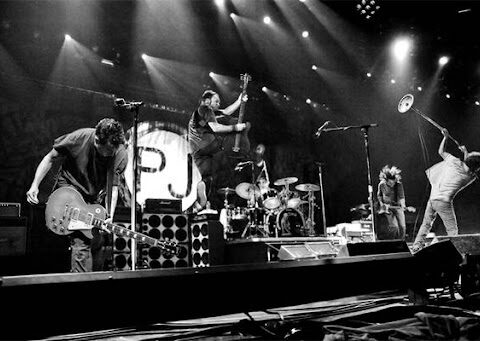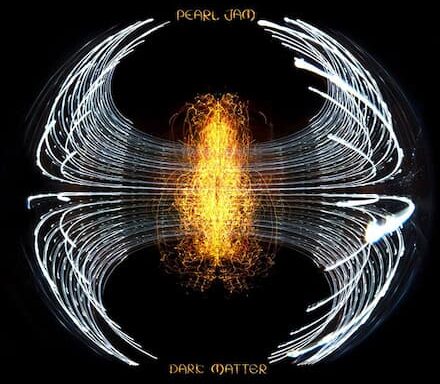It’s been 20 years, unbelievably, since Bjork released her second album, the monumental Post.
And it was such a significant musical moment that it’s hard not to mark that anniversary here and talk about Bjork, that record, and the controversies surrounding the time of its release.
I was already a Bjork fan by this time, having loved Debut – and having loved a couple of Sugarcubes singles when I’d been younger. But Debut, particularly the singles and videos ‘Human Behaviour’ and ‘Big Time Sensuality’, had captivated and excited my then thirteen year old, adolescent mind so much.
Here was this odd, eccentric, otherworldly-like figure prancing about like someone who’d come out of a magic portal in the woods, singing in this strange, exotic voice and creating these enchanting, unforgettable images and sounds.
Bjork, more than anyone I can think of, could turn herself into a kinetic work of art, so much so that you could mute the sound and still be captivated.
It helps, of course, that you don’t want to mute the sound, as the music is so damn fascinating too. I was hooked, from the ‘Big Time Sensuality’ video onward: seriously, watch that video again – you can’t take your eyes off her. I also vividly remember seeing Bjork duet with PJ Harvey – another of my absolute favorite artists to this day – at the Brit Awards in, I think, 1993, and I remember feeling a rush that this was such an exciting time in music. The two of them were put on stage together as a kind of acknowledgement that they were two exciting, powerful female artists breaking through into popular consciousness at roughly the same time.
I doubt, however, that the event organisers knew that we’d still be talking about, and listening to, both of them over two decades later.
But both of them – though following vastly different paths, musically speaking – have enjoyed fascinating, extraordinary careers, pushing musical boundaries, scaling stunning artistic heights, and crafting out unique places for themselves in the landscape.
Back in 1995, by the time Bjork’s second album Post came along, it was impossible to imagine it was going to be a disappointment. We always knew we would get something interesting: we also happened to get something incredibly good too.
While stylistically speaking, it follows organically from 1993’s critically acclaimed Debut, Post was marked by being a particularly collaborative album, on which the Icelandic pixie queen worked closely with various people, including production by Hooper, 808 State’s Graham Massey, and the trip-hop pioneer Tricky.
Björk co-produced every song on the album and was deeply involved in how every element turned out.
Brazilian composter Eumir Deodato, who had been uninvolved in music for a long time, took up Bjork’s request to be involved in the album as composer and conductor on three key songs: ‘You’ve Been Flirting Again’, ‘Isobel’ and ‘Hyperballad’. It gave the tracks an additional weight that she had previously worried was lacking.
Within a very short time of its release, Post was already being considered a watershed moment in ‘art pop’, which flourished on so many levels and pushed so many boundaries. It could also be considered a watershed moment in pop, full stop – but as Bjork remains a singular entity with no real competition or heirs, it’s tough to sell Post as having changed the way popular music is made or having influenced scores of subsequent artists.
Bjork herself – and perhaps on Post most of all – is arguably the end-point of the evolution of pop music and everything it can be.
The extraordinary level of eclecticism displayed on the album – techno, dance and electronic, industrial, house, to jazz, pop, and stuff that defies easy genre assignment – often seems effortless, but in fact was a process of the careful, considered decision making and vision of the singer and her carefully chosen collaborators.
A central theme in the album’s compositions and overall vibe is to capture the transition to Bjork’s then new life moving to London. All the songs were written after she’d moved to England and were partly conveying her trying to adjust to the much faster pace of urban life in a dense city. The iconic cover image itself is also centered on this theme. It is a picture of her in Piccadilly Circus, which she described as being “too excited, too many things”.

What’s great about the simple cover – although all her album covers are striking – is that it is styled similarly to the equally iconic Debut cover and therefore feels more firmly like it is related.
‘Isobel’ came from when she had gone back to Rekjavik for Christmas, the lyrics co-written with an Icelandic poet, Sjón; he had been a member of a circle of ‘anarchist poets’ in Rekjavik to which Bjork had also belonged, along with fellow ex-Sugarcube (and her first husband) Þór Eldon.
The standout tracks are probably ‘Hyperballad’ and ‘Isobel’, which are just such rich soundscapes for her distinctive voice to float around in. ‘Army of Me’ is the most instantly enjoyable track, with its moody, movie soundtrack-like evocativeness.
The single ‘It’s Oh So Quiet’ is probably the song most people know from the record; but that mock-operatic slice of endearing oddness is by no means the most impressive thing on the album.
But really the entire album is a post-modern artistic marvel that never gets old, even twenty years later.
The music videos that accompanied the six singles are, in true Bjork fashion, considerable works of art in themselves. It is possible that no artist makes music videos as consistently fascinating and substantial as Bjork does. She really took the art of promo videos to a different level, seeing them as important facets of the music or the album. While the ‘Human Behaviour’ video from Debut is still my favorite Bjork video, all of the videos from Post – especially the video for ‘Hyperballad’ – are stunning expressions of the medium and great works of art.
Bjork, more than any other artist, gave the whole medium of music videos a sense of artistic legitimacy that is usually absent.
With the videos from the Post album, the effect is that I tend to remember Post very visually and not just musically.
I’m old enough to also remember the controversies surrounding Bjork at this time.
The increased media interest in her looked like an uncomfortable relationship; peaking when she famously punched a female reporter to the ground in Bangkok. A lot of people – particularly that scourge of modern societies: celebrity gossip columnists – vilified Bjork for her violent outburst. As unfortunate as the incident was, the singer was under considerable stress, not just from touring and from press intrusions, but the controversies with her stalker.
Her obsessive stalker, Ricardo Lopez, in fact tried to kill her: and he ended up filming himself committing suicide at what was supposed to be the same time as his plan to kill Bjork came to fruition.
It is obvious, at any rate, that she was extremely stressed by this whole period of time and the incident in Bangkok was clearly her reacting from anxiety over intrusions into her privacy and concerns for her own safety and the safety of her infant child.
All of this no doubt had something to do with why she relocated to Spain to record her next album, the also brilliant Homogenic.
In the years since, Iceland’s most famous child has continued to create fascinating, rich soundscapes and albums and to push the boundaries of art, experimentation and what pop music can be.
She is truly a singular artistic entity with no real point of comparison; and has created a place entirely her own in the musical and cultural landscape.




